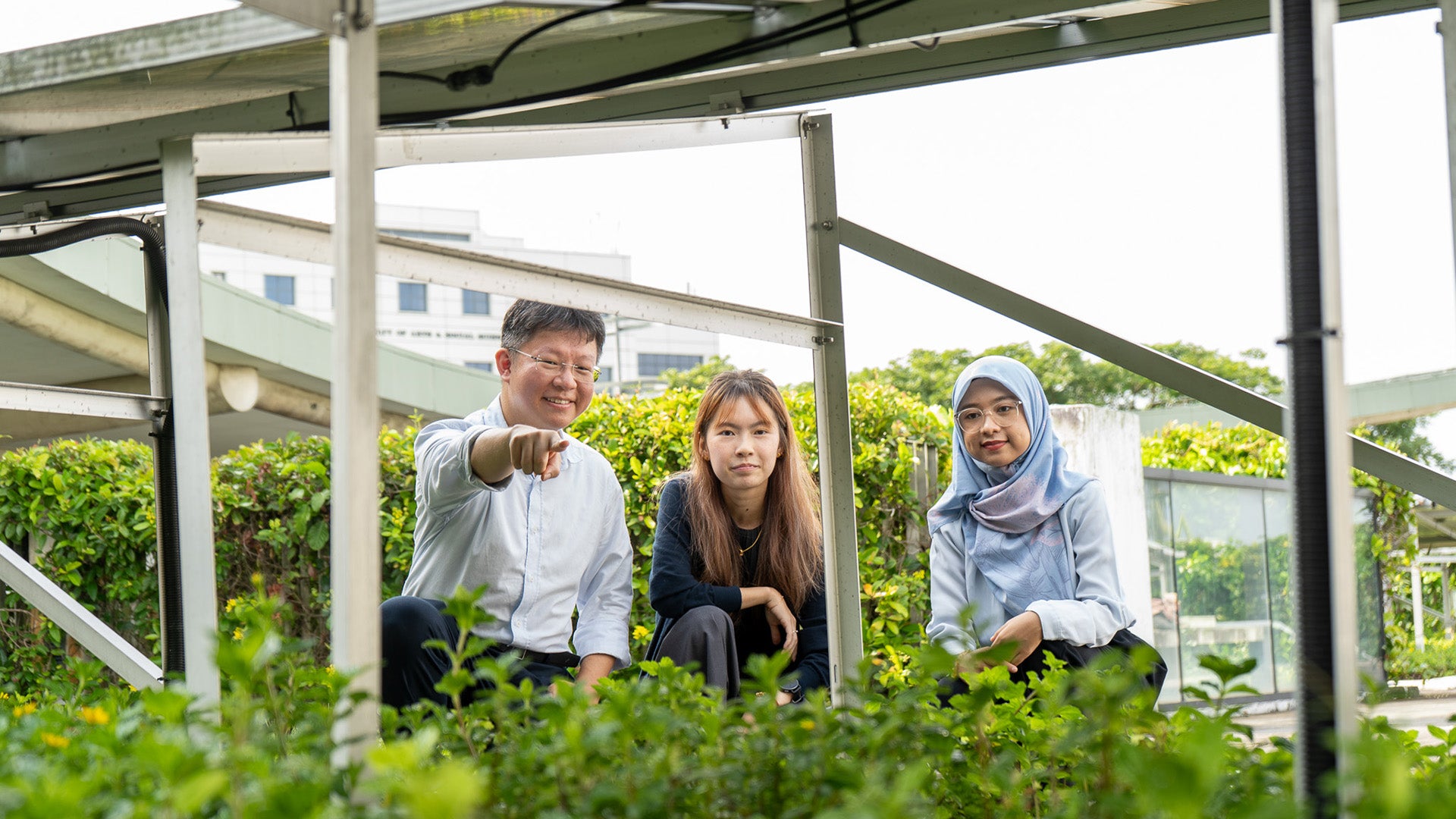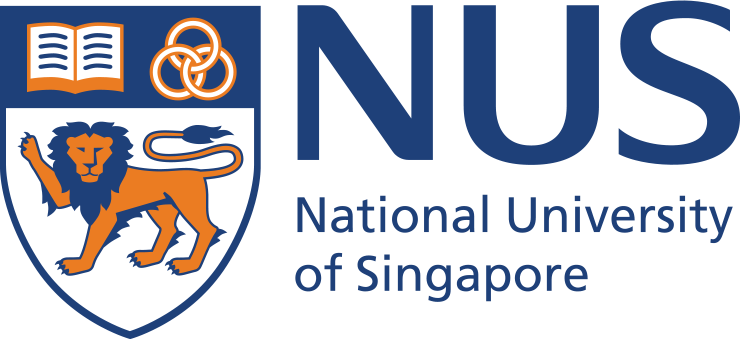RESEARCH IMPACT & COLLABORATIONS
The multiplier effect of combining green roofs and solar panels

In land-scarce Singapore, how can rooftops work harder? They can generate clean energy, support biodiversity, and even make our cities cooler.
A joint study by CDE, The Building and Construction Authority (BCA) and the National Parks Board - led by Assoc Prof Stephen Tay - shows how co-locating solar panels with green roofs unlocks these benefits in tropical cities like Singapore.
One idea, many benefits and another step towards a low-carbon future.
Read more about the research here: https://cde.nus.edu.sg/news-detail/the-multiplier-effect-of-combining-green-roofs-and-solar-panels/
Medical technology that dissolves into the body
A pacemaker smaller than a grain of rice, powered using the body’s own fluids, and which simply and harmlessly dissolves when its job is done.
The device is the creation of Assistant Professor Zhang Yamin, who was recently recognised on the MIT Technology Review’s 2025 Innovators Under 35 (TR35) list.
At CDE, Asst Prof Zhang’s lab is creating self-powered, biodegradable medical devices that could transform patient care and reduce medical waste. Her research is rethinking the future of health and opening new possibilities for safer, more sustainable medical technologies.
Watch the video profile above to find out more.
Asst Prof Fan Shi and team secure Google funding for AI and Robotics study

Asst Prof Fan Shi and his research team members Research Fellow Zeng Ziqiu and Research Engineer Luo Siyuan have received a USD 16,000 unrestricted research funding from Google to support their work in AI for robotics. The award was facilitated through the NUS AI Institute.
Their proposal, "Sim-to-Dex: Contact-Rich Graph Neural Models for Robotic Manipulation", investigates how AI can advance robotics by developing graph neural network models that capture the complex dynamics of contact-rich, dexterous manipulation on humanoid robots. By integrating physics-based simulation data with AI-driven learning, the project aims to enable accurate and real-time decision-making, bridging the gap between simulation and real-world robotic execution.
Smart Fabrics research rethinks wearable technology
Smart fabrics that monitor your health, woven directly into what you wear.
Assistant Professor Irmandy Wicaksono is pioneering “soft technologies” that track heart rate, breathing, movement, and posture in real time.
Durable, washable, and stylish, they could be used in everyday care, sports, rehabilitation, and even future space suits.
Asst Prof Wicaksono's ground-breaking work at the Soft Technologies Lab, within the Division of Industrial Design, recently earned him a place on the MIT Technology Review Innovators Under 35 (TR35) list for 2025.
His innovations include prototype textiles that monitor vital signs and movements, footwear that analyses gait and balance, and, most recently, a space suit that applies automatic compression to mitigate cardiovascular risks during long-term spaceflight. (Watch the short video to see more about Asst Prof Wicaksono's work).
Asst Prof Wicaksono leads a multidisciplinary team advancing smart textiles and the Internet of Things, with projects ranging from wearable systems that sense and respond to the body, to responsive environments that open new forms of interaction and experience. “Our Lab members come from diverse backgrounds: some from the arts, others from design or engineering. Together with DID, we form a community that thrives on bridging these disciplines,” he explains. “Our goal is to cultivate design creativity and technical skills, and develop work that is functional, elegant, and deeply meaningful.”
Commenting on his recognition on the TR35 list, Asst Prof Wicaksono said: “It’s an honour to be recognised alongside such inspiring innovators. My journey has been one of curiosity and exploration, especially in merging textiles and electronics to create new applications. From smart clothes that support health today to envisioning space suits for the future, I’m excited about what lies ahead.”
Major Grants Awarded
The major grants (start date in September 2025) with total project value > $1M.
| Hosting Unit | Project Title | Funding Programme (Source of Funding) |
Principal Investigator | Co-Investigator |
| DBE | Digital twin-based smart fan systems for enhanced energy efficiency and occupant comfort | GBIC R&I Challenge for Decarbonisation - 2024 / Building and Construction Authority (BCA) | Ali Ghahramani | |
| MSE | Wearable garment for non-invasive AI-assisted blood pressure monitoring | NMRC open fund individual research grant (OF-IRG) – 2025 / Ministry of Health (MOH) | Tural Khudiyev | |
| CEE | Periodic inspection and defect detection of coastal infrastructure using Autonomous Underwater Vehicles | Coastal protection and flood management research programme (CFRP) - applied research – 2024 / National Research Foundation (NRF) | Geng Guoqing | Yeoh Ker-wei; Ang, Marcelo Jr. H; Tee Chee Keong, Benjamin |
| ECE | Formation flying microsatellites space access programme | Office for Space Technology and Industry (OSTIN) - space technology development programme grant – 2025 / National Research Foundation (NRF) | Sheral Crescent Tissera |


